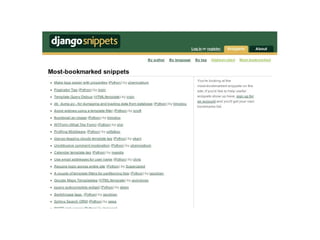Django for Beginners
- 1. An Introduction Jason Davies PyCon UK 2007
- 3. ljworld.com
- 9. Overview of this Tutorial Brief introduction and philosophy Creating Django models The automatic admin interface Views (and URLs) Templates Comparison with other frameworks
- 10. Django's Mission Statement “Django is a high-level Python web framework that encourages rapid development and clean, pragmatic design.”
- 11. Django Requirements Python (2.3+) PostgreSQL / MySQL / SQLite / ... Apache + mod_python / FastCGI / ...
- 12. “Projects” $ django-admin.py startproject myproject
- 13. myproject/ __init__.py manage.py settings.py urls.py
- 14. $ ./manage.py runserver Validating models... 0 errors found. Django version 0.96-pre, using settings 'myproject.settings' Development server is running at http://127.0.0.1:8000/ Quit the server with CONTROL-C.
- 16. “Apps” $ django-admin.py startapp blog
- 17. myproject/ blog/ __init__.py models.py views.py __init__.py manage.py settings.py urls.py
- 18. Creating Models from django.db import models class Blog(models.Model): title = models.CharField(maxlength=200) class Post(models.Model): title = models.CharField(maxlength=200) body = models.TextField() blog = models.ForeignKey(Blog) pub_date = models.DateTimeField()
- 19. Activating Models $ ./manage.py syncdb Creating table blog_blog Creating table blog_post Loading 'initial_data' fixtures... No fixtures found.
- 20. Activating the Admin Interface from django.db import models class Blog(models.Model): title = models.CharField(maxlength=200) class Admin: list_display = ['title'] class Post(models.Model): title = models.CharField(maxlength=200) body = models.TextField() blog = models.ForeignKey(Blog) pub_date = models.DateTimeField() class Admin: list_display = ['title', 'pub_date']
- 23. Model API $ ./manage.py shell >>> from myproject.blog import Blog >>> b = Blog( ... title=”Jason's Fantastic Blog!!!”) >>> b.save()
- 24. >>> all_blogs = Blog.objects.all() >>> print all_blogs [<Blog: Blog object>] >>> print all_blogs.name Jason's Fantastic Blog!!! >>> b = Blog.objects.get(name__contains='Jason') >>> print b.title Jason's Fantastic Blog!!!
- 25. URLs ROOT_URLCONF = 'myproject.urls'
- 26. URLconfs from django.conf.urls.defaults import * from myproject.blog.views import * urlpatterns = patterns('', (r'^admin/', include('django.contrib.admin.urls')), (r'^blog/$', post_list), (r'^blog/(?P<id>+)/$', post_list), )
- 27. Views from django.http import HttpResponse def post_list(request): return HttpReponse(“This is a list of posts!”)
- 28. from django.http import HttpResponse from myproject.blog.models import Post def post_list(request): r = “<ul>” posts = Post.objects.order_by(“-pub_date”) for post in posts: r += “<li>%s: %s</li>” % (post.title, post.body) r += “</ul>” return HttpResponse(r) More realistic...
- 29. from django.shorcuts import render_to_response from myproject.blog.models import Post def post_list(request): posts = Post.objects.order_by(“-pub_date”) return render_to_response('blog/post_list.html', { 'post_list': posts, }) Better!
- 30. from django.shorcuts import render_to_response from myproject.blog.models import Post def post_detail(request, id): post = get_object_or_404(Post, id=id) return render_to_response('blog/post_detail.html', { 'post': post, }) For completeness...
- 31. Templates <html> <body> <h1>Jason's Fantastic Blog!!!</h1> <ul> {% for p in post_list %} <li> <a href=”{{ p.id }}/”>{{ p.title|escape }}</a> </li> {% endfor %} </ul> </body> </html>
- 32. The magic dot p[“name”] p.name p.name()
- 34. base.html <html> <head> <title>{% block title %}{% endblock %} </head> <body> <div id=”content”> {% block content %}{% endblock %} </div> <div id=”footer”> {% block footer %} Copyright Jason Davies 2007. {% endblock %} </div> </body> </html>
- 35. {% extends “base.html” %} {% block title %} Posts | {{ block.super }} {% endblock %} {% block content %} <h1>Blog Posts ({{ post_list|length }} total)</h1> <ul> {% for post in post_list %} <li> <a href=”{{ post.id }}/”> {{ post.title|escape }} </a> </li> {% endfor %} </ul> {% endblock %}
- 36. Ruby on Rails http://www.rubyonrails.org/
- 38. Thank you for listening. Jason Davies [email_address] http://www.jasondavies.com/
Editor's Notes
- Hello! My name is Jason Davies; I'm a freelance Web developer from Cambridge and I've been using Django for about 2 years ever since it was open-sourced in July 2005. Hopefully this will give you a good introduction to the basics of Django. Simon Willison will cover even more stuff in the advanced tutorial.
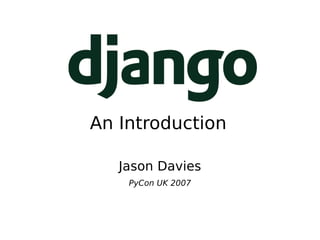




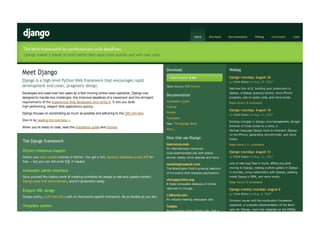



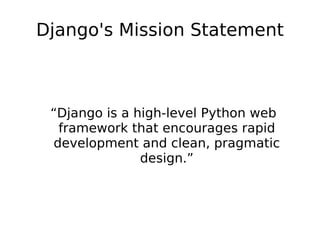




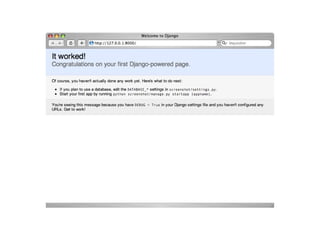

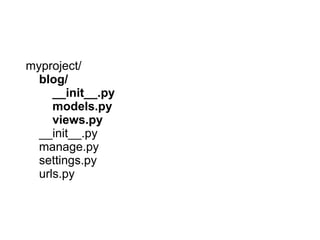


![Activating the Admin Interface from django.db import models class Blog(models.Model): title = models.CharField(maxlength=200) class Admin: list_display = ['title'] class Post(models.Model): title = models.CharField(maxlength=200) body = models.TextField() blog = models.ForeignKey(Blog) pub_date = models.DateTimeField() class Admin: list_display = ['title', 'pub_date']](https://image.slidesharecdn.com/django-for-beginners-1207105274643353-3/85/Django-for-Beginners-20-320.jpg)
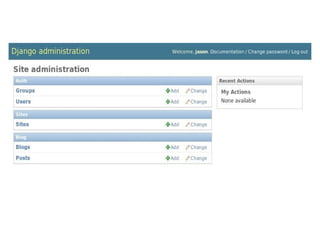

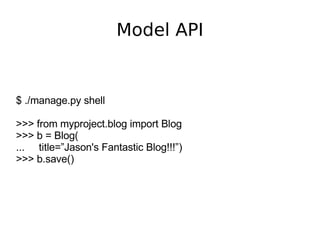
![>>> all_blogs = Blog.objects.all() >>> print all_blogs [<Blog: Blog object>] >>> print all_blogs.name Jason's Fantastic Blog!!! >>> b = Blog.objects.get(name__contains='Jason') >>> print b.title Jason's Fantastic Blog!!!](https://image.slidesharecdn.com/django-for-beginners-1207105274643353-3/85/Django-for-Beginners-24-320.jpg)

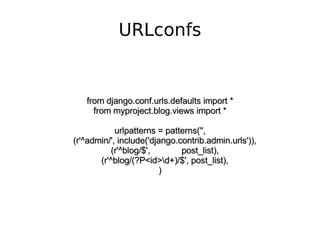



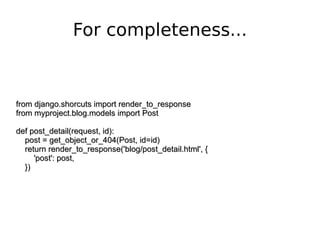
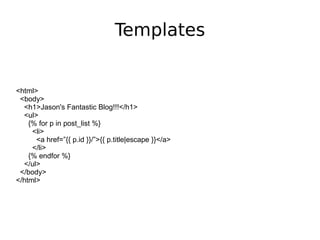
![The magic dot p[“name”] p.name p.name()](https://image.slidesharecdn.com/django-for-beginners-1207105274643353-3/85/Django-for-Beginners-32-320.jpg)

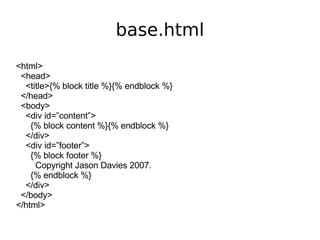


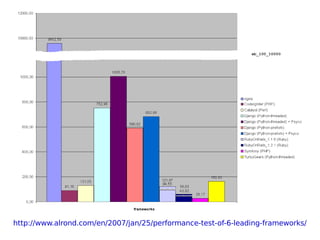
![Thank you for listening. Jason Davies [email_address] http://www.jasondavies.com/](https://image.slidesharecdn.com/django-for-beginners-1207105274643353-3/85/Django-for-Beginners-38-320.jpg)

